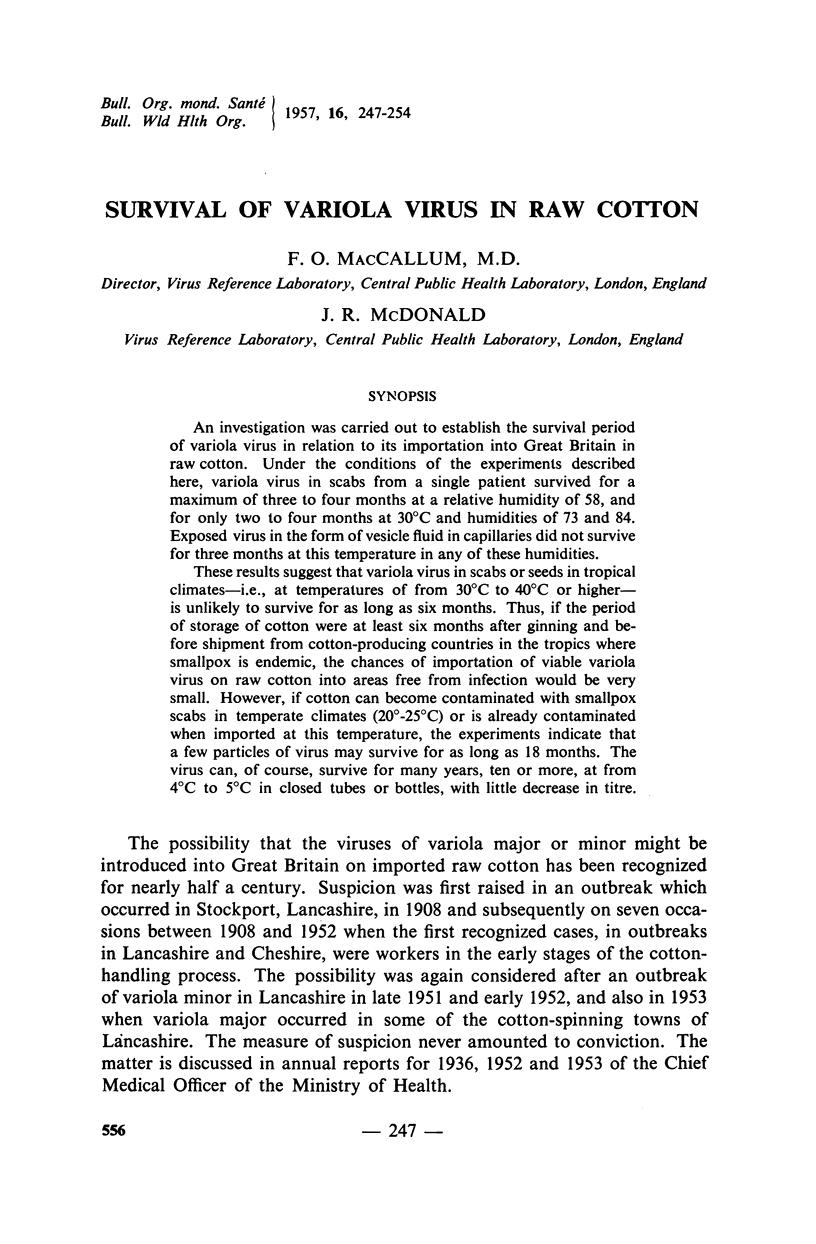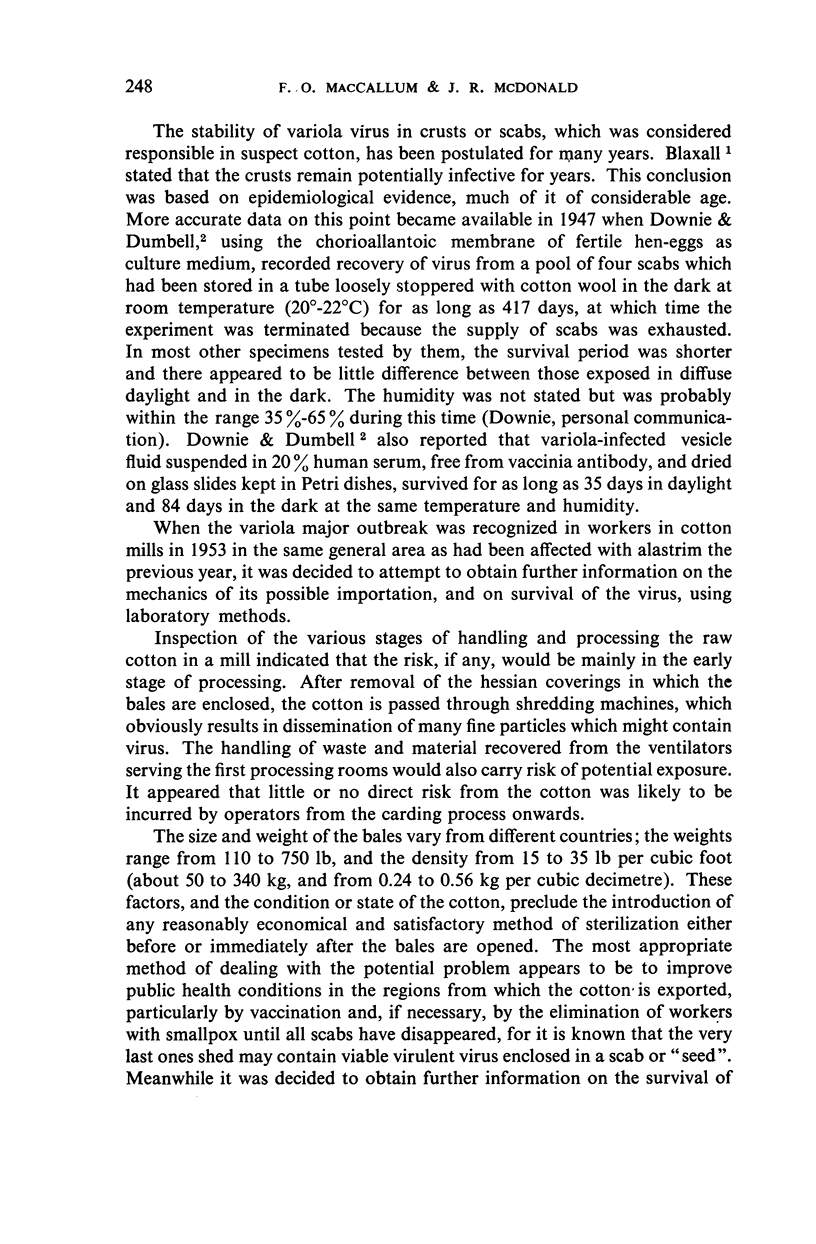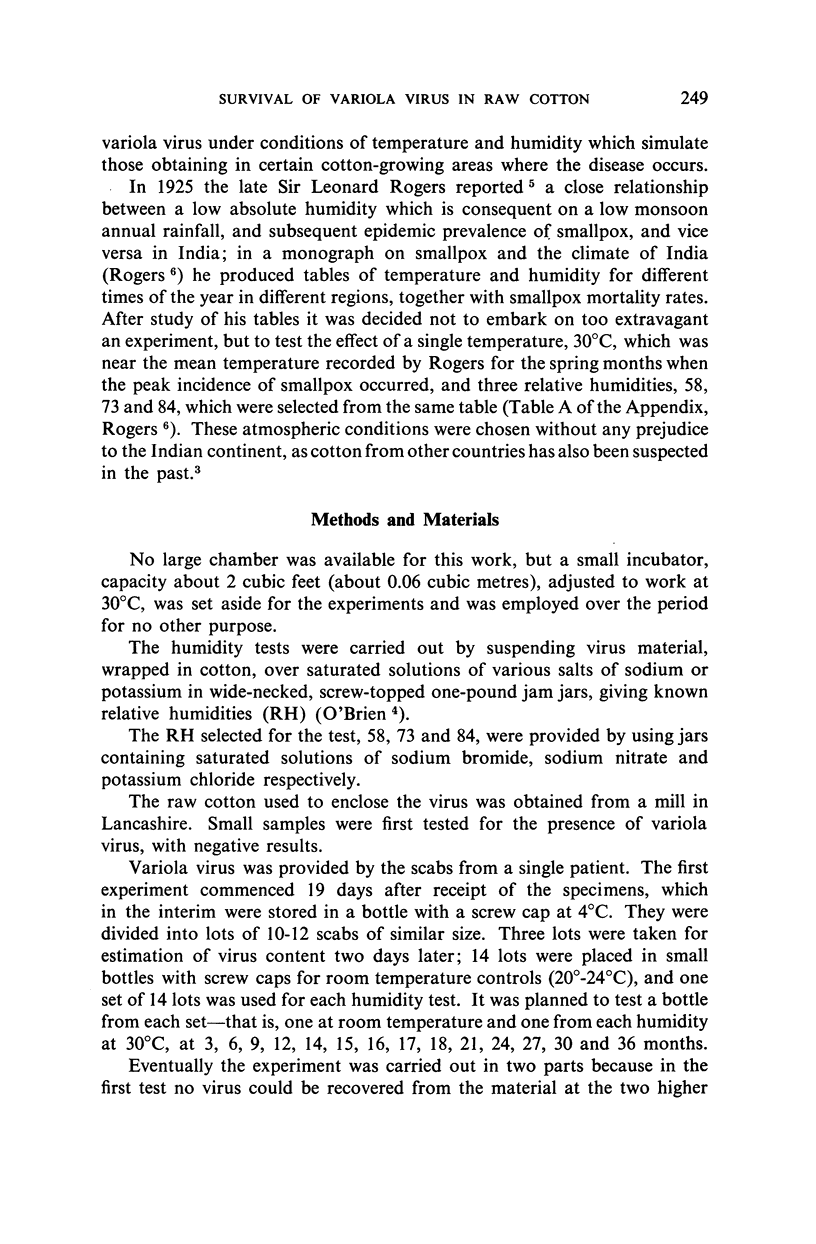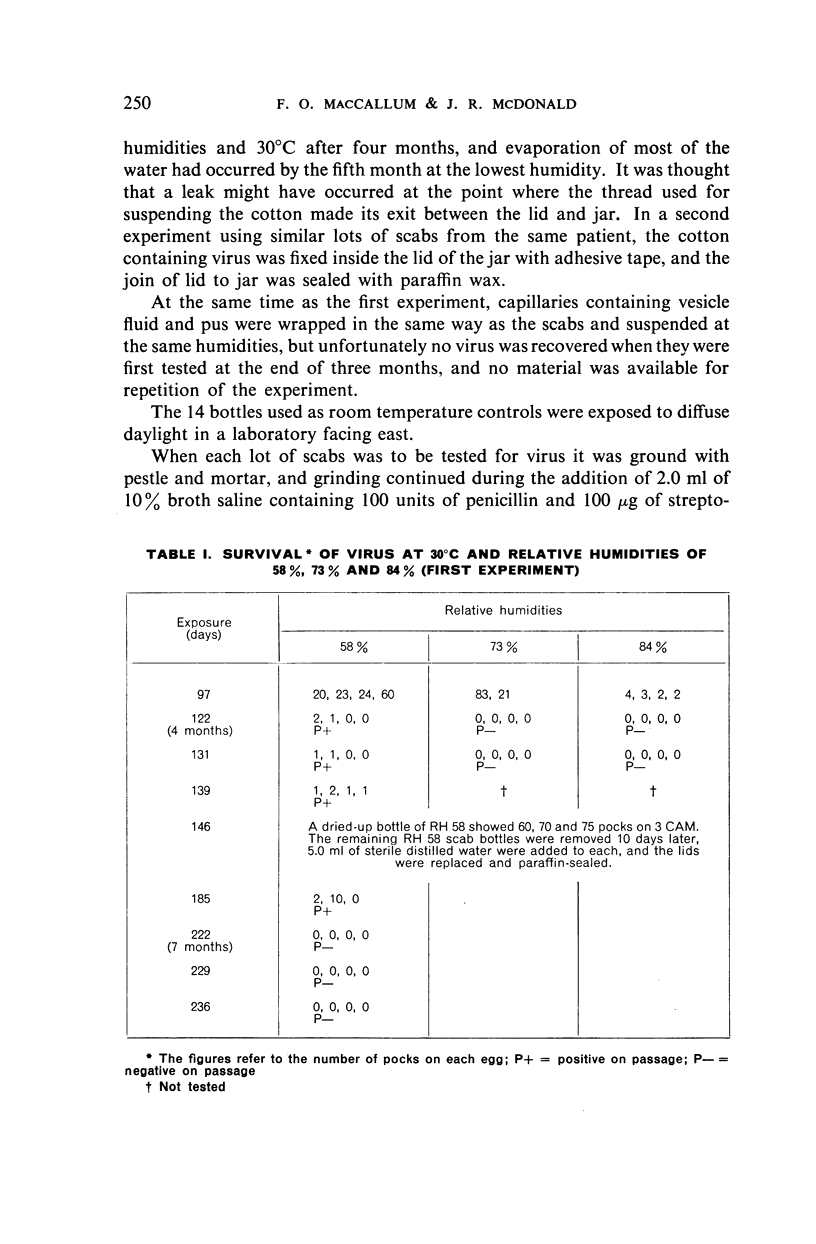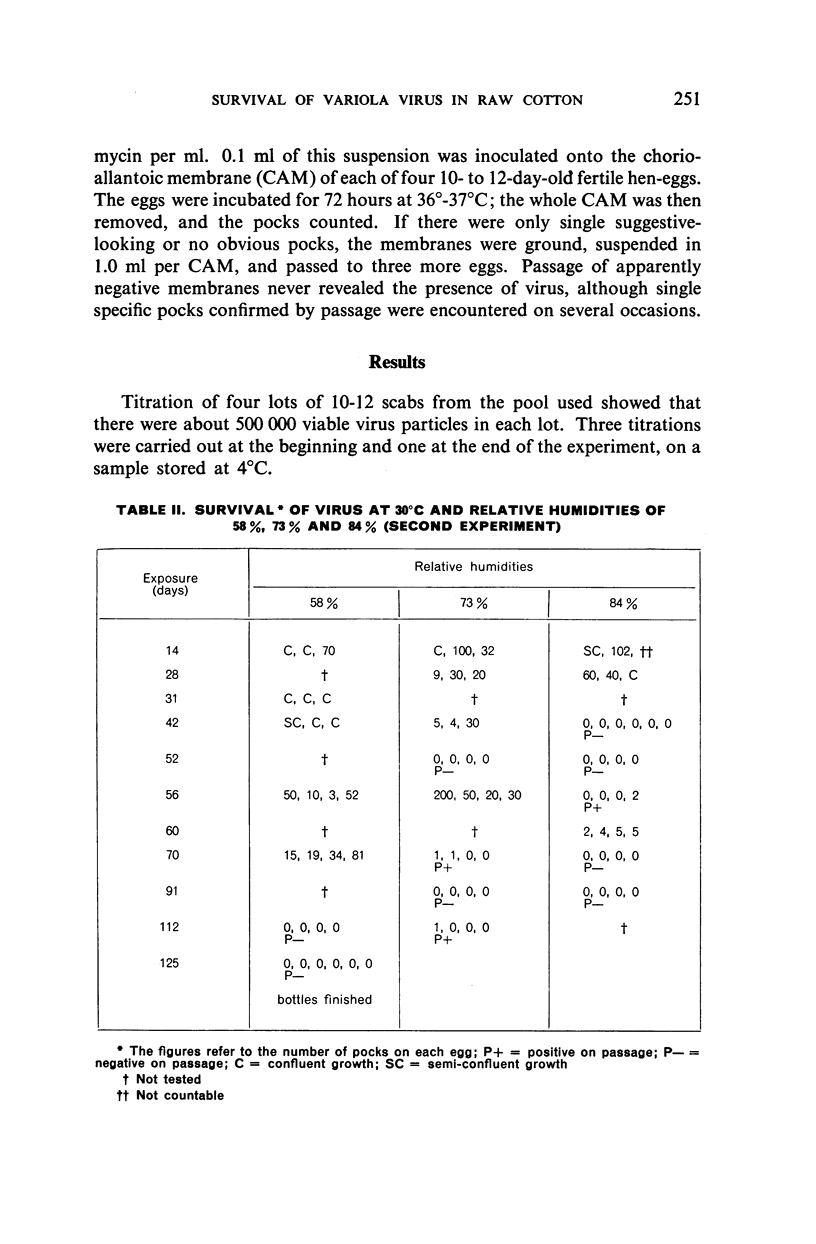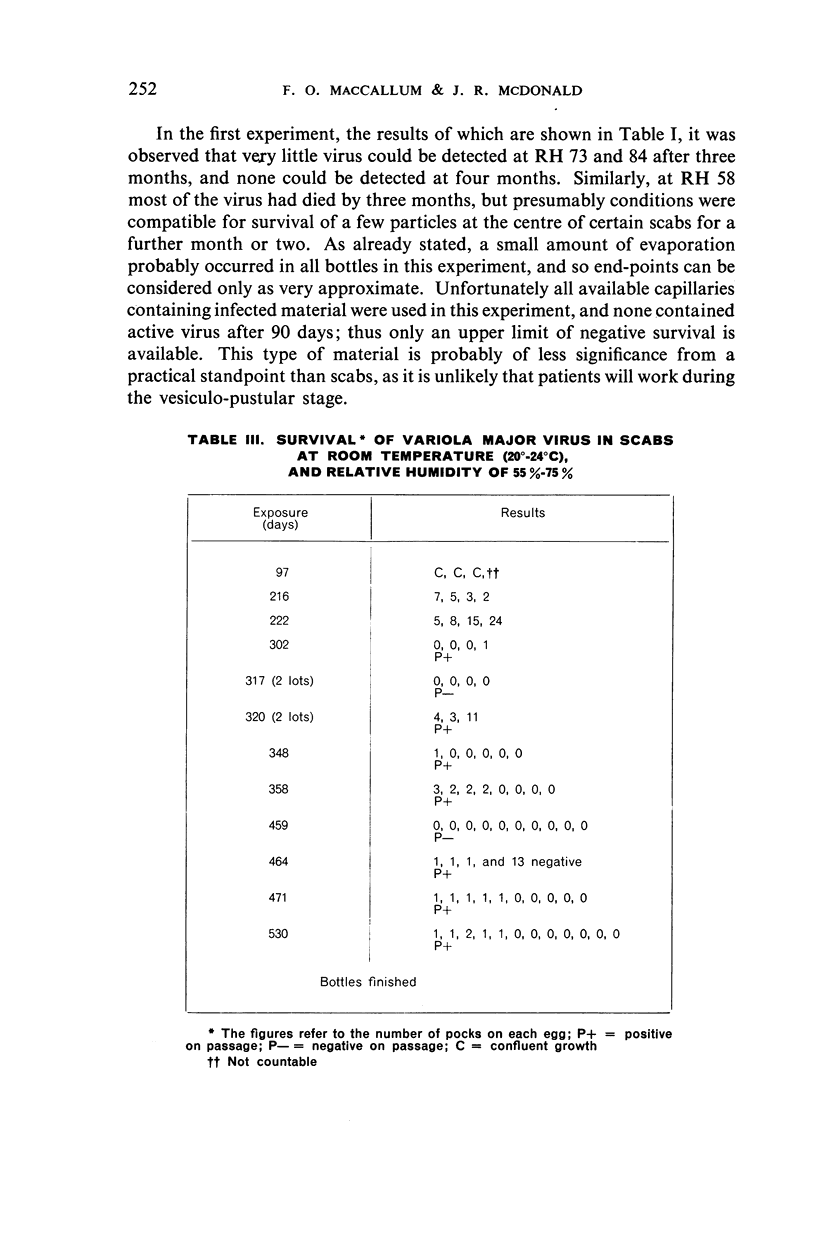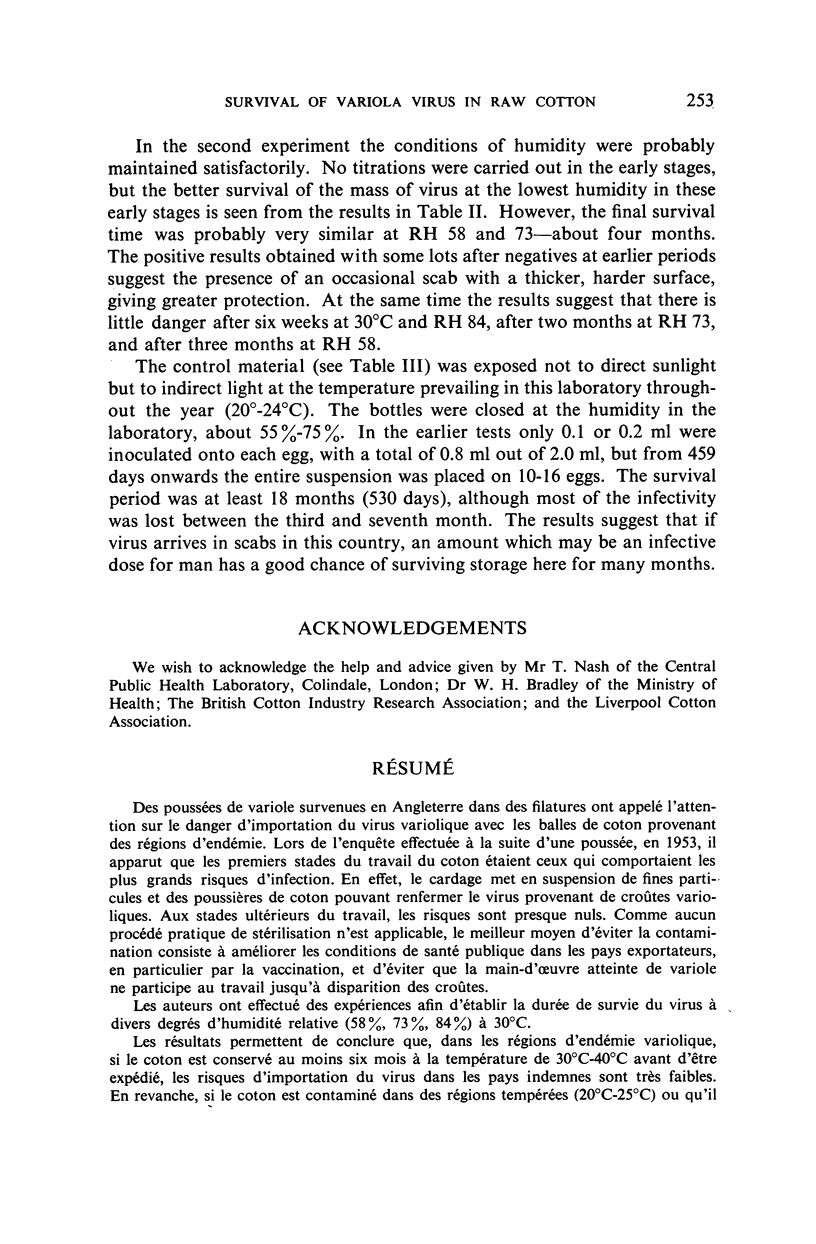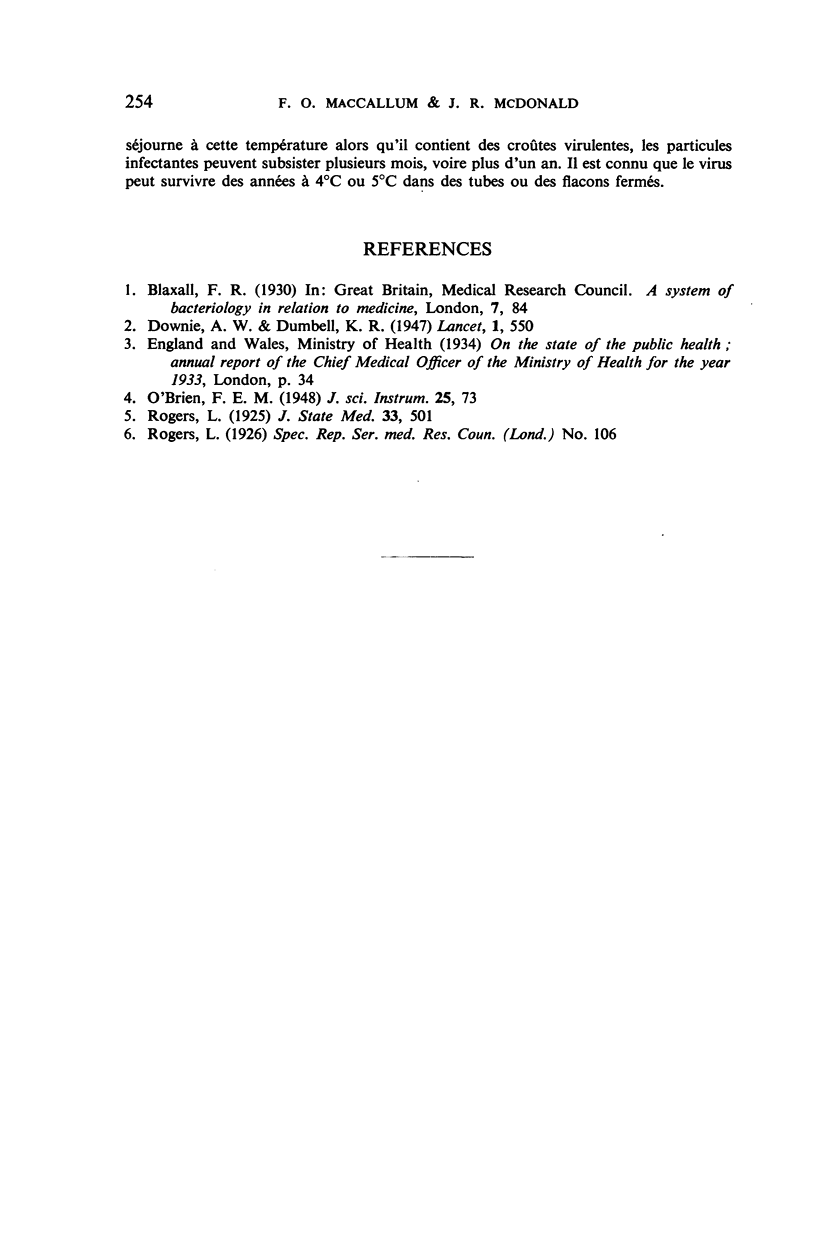Abstract
An investigation was carried out to establish the survival period of variola virus in relation to its importation into Great Britain in raw cotton. Under the conditions of the experiments described here, variola virus in scabs from a single patient survived for a maximum of three to four months at a relative humidity of 58, and for only two to four months at 30°C and humidities of 73 and 84. Exposed virus in the form of vesicle fluid in capillaries did not survive for three months at this temperature in any of these humidities.
These results suggest that variola virus in scabs or seeds in tropical climates—i.e., at temperatures of from 30°C to 40°C or higher—is unlikely to survive for as long as six months. Thus, if the period of storage of cotton were at least six months after ginning and before shipment from cotton-producing countries in the tropics where smallpox is endemic, the chances of importation of viable variola virus on raw cotton into areas free from infection would be very small. However, if cotton can become contaminated with smallpox scabs in temperate climates (20°-25°C) or is already contaminated when imported at this temperature, the experiments indicate that a few particles of virus may survive for as long as 18 months. The virus can, of course, survive for many years, ten or more, at from 4°C to 5°C in closed tubes or bottles, with little decrease in titre.
Full text
PDF